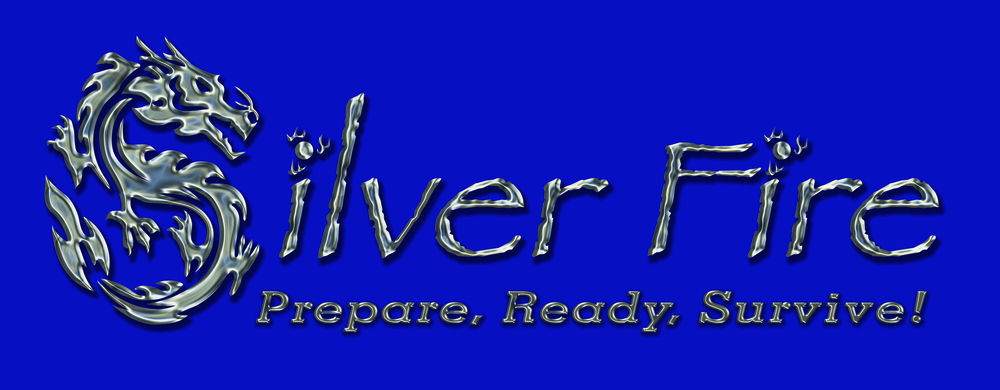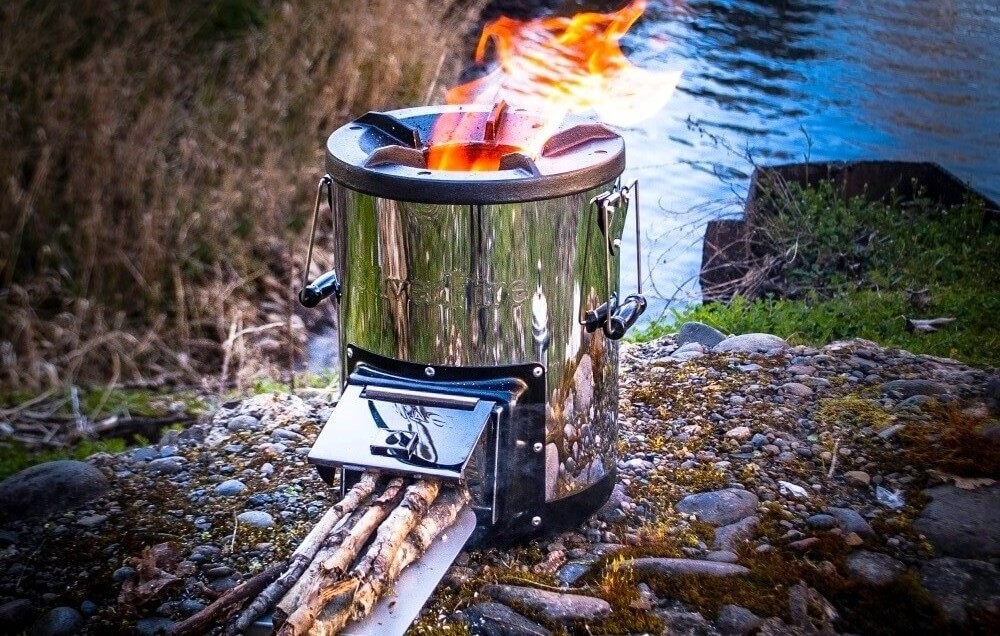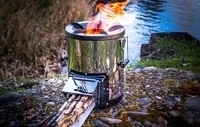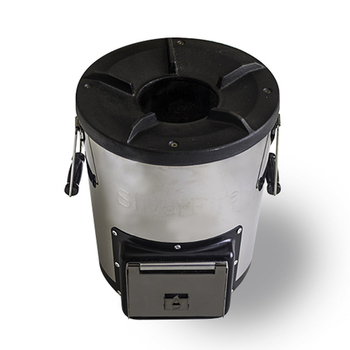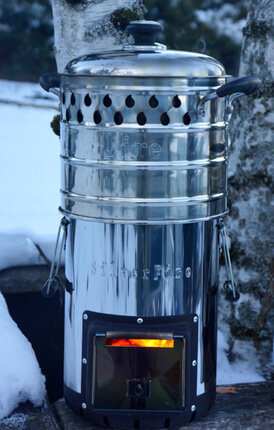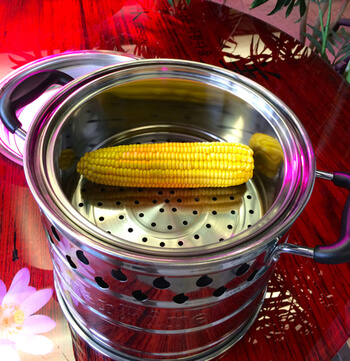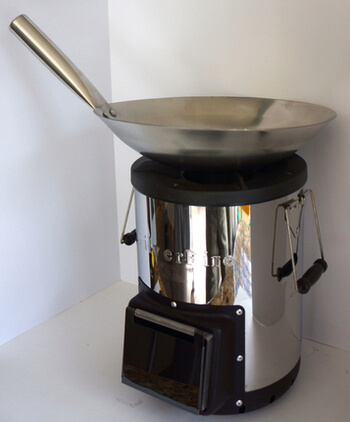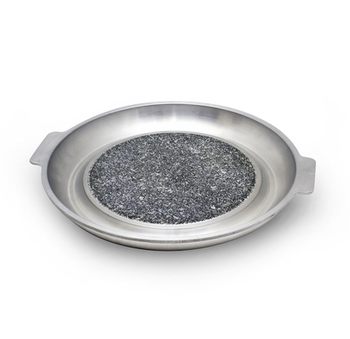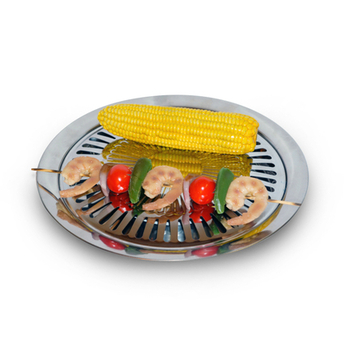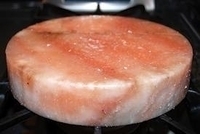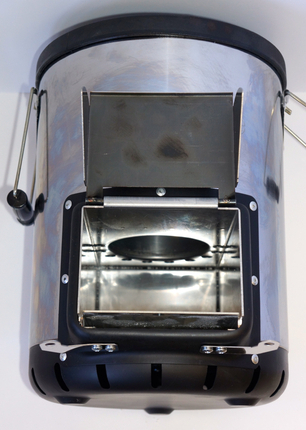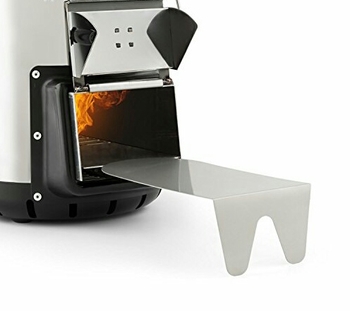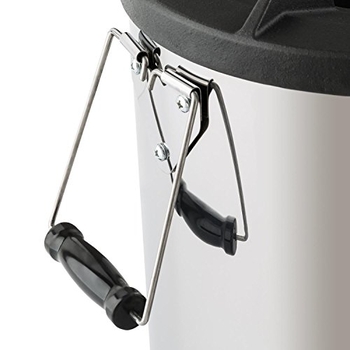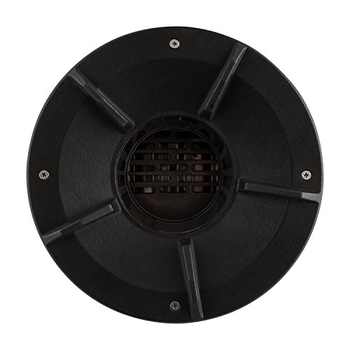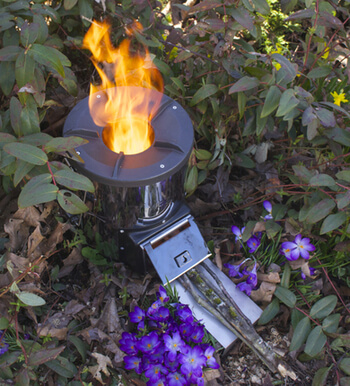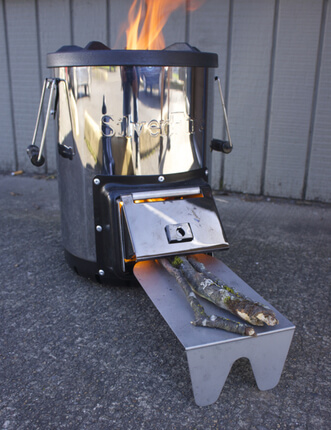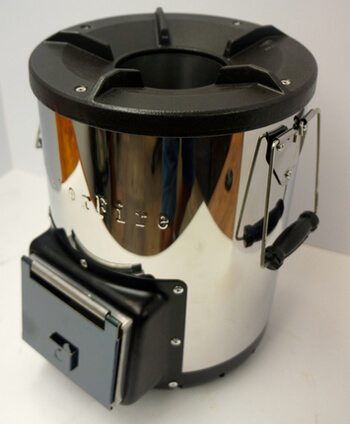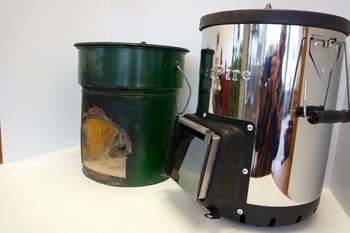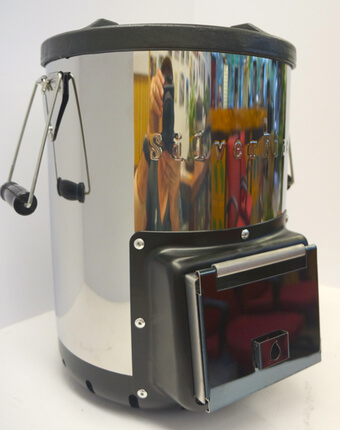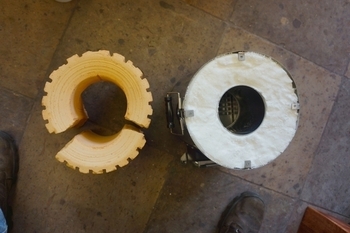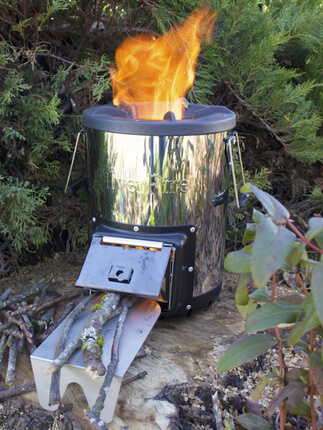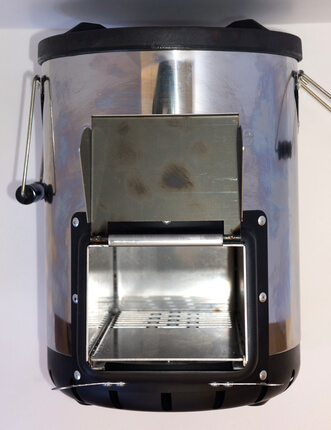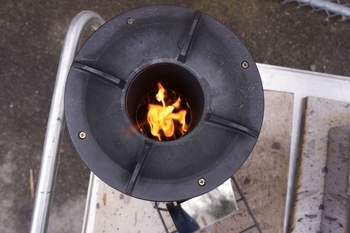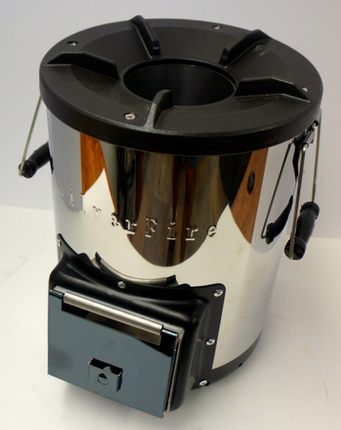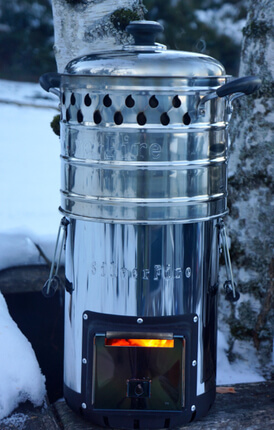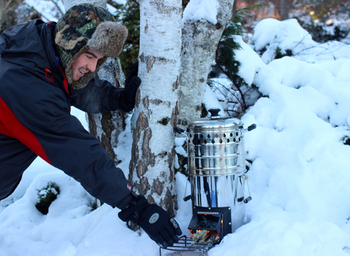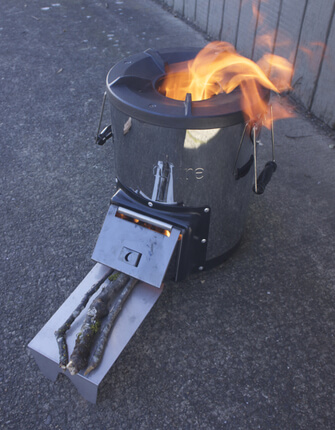Survivor Rocket Stove
Price: $199.95
Introducing the new 2021 SilverFire® Survivor 2nd Generation rocket stove with secondary combustion and upgrade thicker Stainless Steel combustion chamber!
Introducing the new 2021 SilverFire® Survivor 2nd Generation rocket stove with secondary combustion and upgrade thicker Stainless Steel combustion chamber!
Introducing the new 2021 SilverFire® Survivor 2nd Generation rocket stove with secondary combustion and upgrade thicker Stainless Steel combustion chamber! We have made our robust award-winning stove even tougher. Folks around the world rely on our stoves to stay alive sanitizing water for drinking, cooking, and cleaning applications. This is the most efficient natural draft rocket stove we have offered to date. While other lower-quality and less efficient stoves (StoveTec, EcoZoom, and others) are shortchanging you on build and performance, we continue to improve our product offerings!
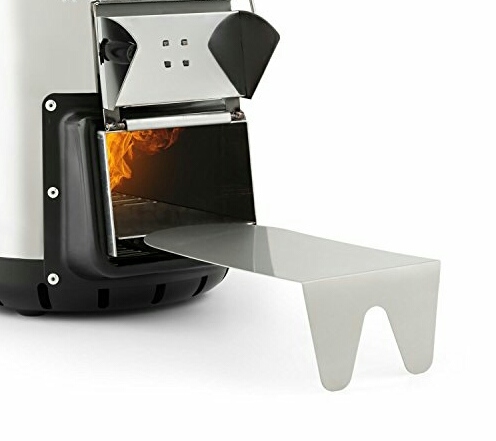
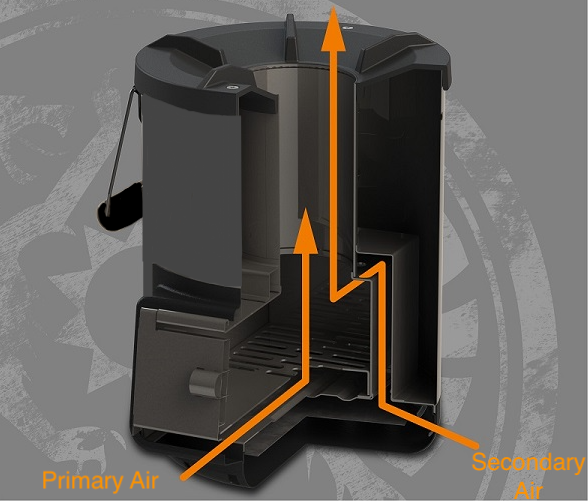
Product Name: Survivor Rocket Stove
Submitters Name: Melissa Jett
Headline: Hurricane Matthew
Product Rating: 5.0
To Order: Select Add to Cart and proceed to the Cart to checkout on the top right of the page.
You never have to create an account to buy from SilverFire! 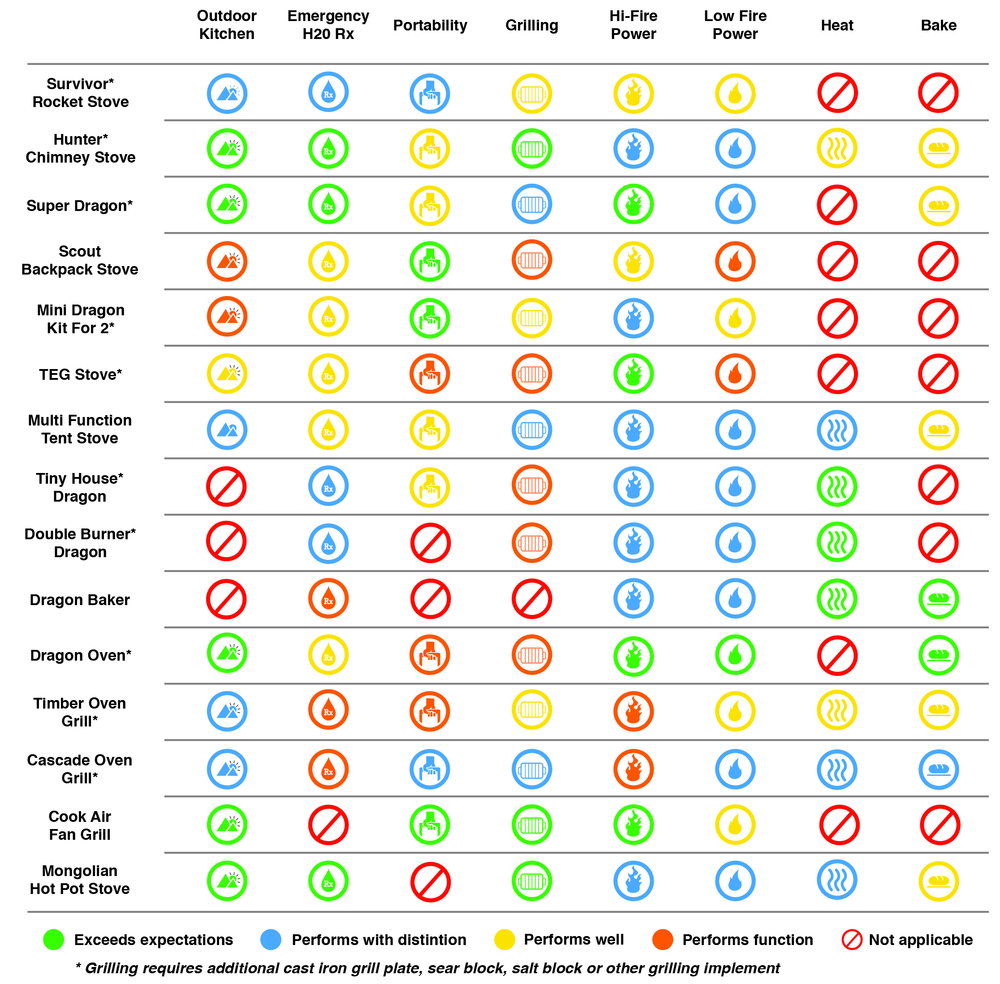
Our SilverFire® Survivor rocket stove features our new solid stainless steel fuel shelf! This state of the art clean cookstove is durable, fun, and fast. SilverFire combines both secondary and primary combustion. Our rocket stove is more efficient and uses less fuel than other rocket stove designs. Competitive rocket stoves utilize primary combustion only.
Our Survivor rocket stove is easily identified by our solid stainless steel fuel shelf that stows inside the rectangular combustion chamber! Another SilverFire® rocket stove design 1st! No cheap painted steel wire rack to lose or misplace when you need it! Our correct rectangle-shaped rocket stove combustion chamber allows the stainless steel shelf to ride inside the combustion chamber behind our custom black stainless steel door, when not in use. This is not possible by inferior round-shaped combustion chambers found in most of our competitor's stoves. The Stainless steel solid shelf has a tab that locks directly into combustion chamber floor and allows easy insertion of bio-fuels into the combustion chamber, compared to poorly designed wire racks utilized by StoveTec, EcoZoom and early EnviroFit stoves, which are easily identified by painted mild steel stove bodies that are inferior and poor quality. They all look the same with different paint jobs, slight design modifications, and have cheap clay tile floor titles that crack and fall apart.
Survivor Rocket Stove Assembly Video:
SilverFire uses real ventilation ductwork for secondary combustion in the firebox floor, no cheap clay titles to crack, or fail. The thin mild steel StoveTec, EcoZoom, & EnviroFit stove bodies are subject to short stove life. Our new stainless steel fuel rack ensures greater safety by not allowing hot embers to fall through wire rack. Stainless steel is a superior material for stove construction than mild steel. Rock mineral wool insulation is superior to cheap clay insulation or tiles, period.
Another point of confusion is the 2 door wood and charcoal stove sold by StoveTec & Ecozoom (same stove, different paint jobs). StoveTec (which we created to market stoves for Aprovecho in 2008) offers a humanitarian 2 door stove. It was never the intent to use charcoal as a primary fuel for this stove. Charcoal or coal reduces the stove shelf life. The 2 Door stove sold by StoveTec & EcoZoom was created for uneducated 3rd World cooks that were and continue to destroy their fuel resources by producing and cooking with charcoal. The idea was to teach the uneducated to stop using charcoal and move them to twigs & biomass!
Illegal charcoal production is why so many areas on this planet's forests have disappeared. Charcoal production only yields 30% of the tree. It not sustainable. The pollution is impacting air sheds worldwide. Charcoal burning releases harmful methane emissions during production and then again a second time when cooking. In a real emergency, large volumes of water are required for drinking, cooking, & cleaning. Charcoal, although burning hot does not boil large volumes of water since the flames are not licking the pot (reduced heat transfer). The rocket stove was invented to use found scrub on the ground, to provide the ability to cook for free, eliminate reliance on commercial distribution, reduce emissions, reduce fuel requirements, use renewable fuel resources, and maximize heat transfer to the cooking vessel.
Try boiling a large pot of water on a Weber charcoal BBQ grill, for example, you'll learn it can't be done, there is not adequate heat transfer. All rocket stoves are not equal, although they can cook a hamburger or boil small pots of water. This is not an important daily cooking or emergency preparedness performance endpoint.
Providing a minimum of a gallon of emergency drinking water, or a pot of water to cook a meal (5 liters of water or more), or an adequate amount of water to sanitize your cookware is an important rocket stove comparison. An important stove test to measure meaningful stove performance from one stove to another was the creation of the WBT (5 liter Water Boiling Test). Bringing large volumes of water to a boil with minimal fuel and just fine ash left as the end product is what distinguishes real stove performance.
The SilverFire® Survivor is more than twice as fast boiling large volumes of water compared to the BioLite Basecamp fan stove ($299.95) for example, without the need to constantly remove spent embers due to less efficient stove combustion. Note photo below with the SilverFire® Survivor rocket stove on left showing fine ash and heavy char requiring constant removal on the stove on right. Stove on right burned significantly less efficiently, used more fuel, and required constant maintenance.
Heavy ember & char accumulation is a sign of inefficient combustion, more than doubling time to boil, the time required cleaning, impeding heat transfer, and ventilation. The stove on the right is almost twice the price of our SilverFire® Survivor and significantly less efficient!
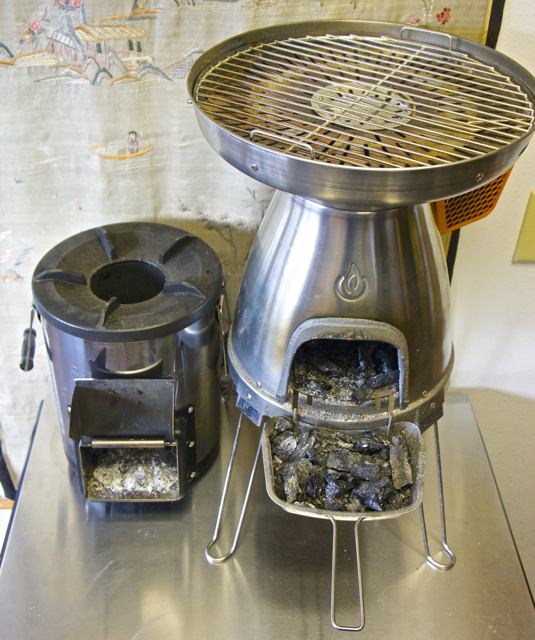
This is also true comparing every other rocket stove we have tested, less efficient combustion results in larger amounts of heavy embers, which impedes heat transfer and ventilation. This is why numerous other rocket stoves cannot bring large pots of water to a boil and require frequent ember removal. The SilverFire® Survivor is the most efficient burning rocket stove on the planet, and fine ash is the final combustion end product. Large ember debris post-combustion is a sign of inefficient combustion. The SilverFire® Survivor by contrast only leaves fine ash residue, characteristic of efficient combustion. This means less time spent cleaning stove, increased heat transfer, and more efficient ventilation while cooking.
Here is a new customer modification the SilverFire smokeless fire pit:
Any rocket stove can efficiently cook a hamburger or boil small volumes of water, however, real stove performance is measured bringing the International Standard of 5 liters of water to a boil. Most rocket stoves we test fail these simple tests. The unfortunate fact is we have not tested the USA made rocket stove that can meet the International requirement of boiling 5 liters of water, much less doing it with only 500 grams of fuel (SilverFire® Survivor, 2013). All other rocket stoves we have tested require more frequent cleaning due to less efficient combustion design.
At the Aprovecho stove lab in 2008, we tested the Grover rocket stove which failed the WBT, after 1750 grams of fuel could not bring the International standard of 5 liters of water to a boil. Homemade DIY and non-insulated rocket stoves do not perform even that well. A well-designed rocket stove must incorporate numerous combustion design principles. Most homemade and commercial rocket stoves have significant shortcomings incorporating both combustion principles and the correct cross-sectional airflow to maximize heat transfer with the stovetop. Correct cross-sectional flow is as important as insulating the combustion chamber.
Our Survivor uses minimal fuel, produces little emissions or smoke. Our end product is fine ash, not large embers of char that decrease ventilation, fill the combustion chamber, and choke off the stove, retarding efficient combustion. The SilverFire Survivor is a revolutionary design, incorporating secondary air, primary air, and a door for a hotter fire during high firepower cooking. This results in cleaner combustion than other rocket stove designs, and evident by just fine ash left behind. During low firepower cooking, such as simmering operations, just drop fuel through the top of the stove for long extended low firepower cooking. The door is designed to be closed or laying on top of your fuel during cooking operations.
Crude homemade rocket stoves and poorly designed commercial rocket stoves leave larger pieces of char and embers behind since combustion results are not as complete as with the SilverFire Survivor. The Survivor door is designed to be always falling down on the fuel to retain a hotter fire inside the firebox. This is common sense, your grandmother did not cook with the firebox doors open on her wood stove, nor should you with a rocket stove. We do not recommend cooking with the door open, but unfortunately, some product reviews have shown our product used with the door in the open position, which makes for less efficient combustion. The door is intended to always be falling down on minimal dry fuel for the best results.
Complete combustion and high thermal efficiency is the important outcome with our stove, resulting in fine ash. Fine ash is the end product of complete combustion and a well-designed cook stove. The advanced design is intended for improved efficiency and durability. Compare our superior quality to other brands of rocket stoves, and draw your own conclusions. Our current 2016 Survivor has had numerous upgrades from our initial Spring 2013 (sold out) product launch.
The 2016 Survivor design improvement upgrades include:
1. The Perlite insulation is no longer available and has been swapped out for premium rock mineral wool insulation to eliminate Perlite residue (fine dust) that was evident with rough handling by ground transportation services, during transport and deliveries.
2. Handles are now shipped inside the stove and attached by the customer to prevent the cosmetic dings we saw with ground transportation handlers. Pem nuts are now embedded in the stainless steel stove wall and 6 fine thread Phillip head machine screws are provided to attach handles to the stove. Long handles are an important feature of the Survivor rocket stove. In an emergency, it may be carried while burning if required. Close-fitting rocket stove handles mean your wrists, hands, or fingers will likely be burned if the stove has to be moved in an emergency. Do not buy rocket stoves with poorly designed stubby handles attached to close to stove body!
3. Our original cast iron stove top had 4 pot supports, Our new upgraded cast iron stove top, now includes 5 pot supports! Our rocket stove cast iron top is the thickest and most durable of any brand currently on the market, ensuring years of reliability.
4. We have the only rocket stove in the World with 360 degrees primary combustion ventilation and ducting in the floor of the stove, with no cheap clay tiles! An additional temperature reducing baffle plate has been added to the bottom of the stove, for safer handling and to decrease the temperature on cooking surfaces. Our stove has is the coolest surface temperature below the stove of any product on the market. Many rocket stove designs have legs to try to compensate for the fact that the stove design is too hot below the combustion chamber. These designs also require the cook to squat while cooking. The SilverFire Survivor can be safely placed on ergonomic cooking surfaces, such as a wooden picnic table. Our stove does not require the cook to squat or cook on the ground.
5. A fuel gauge has been added to the custom black stainless steel stove door (another SilverFire exclusive rocket stove design feature)! The flame-shaped diameter fuel gauge is intended to remind folks this is the actual diameter of fuel required for the stove or less! While you can add larger fuel in the stove, standard pencil diameter sized twigs and yard debris is all that is required to cook within our stove. The fuel gauge also provides a second option to lift the stove door when adding fuel, or moving it forward on the fuel shelf. The door is designed to be down when cooking! Tip: Numerous reviews on the web are showing inappropriate cooking techniques with the door open and anywhere from 4 to 10 times too much fuel required! Door down, less fuel!
6. New upgrade ventilation design under grate for improved operation when used for extended cooking durations. This stove allows the most extended duration cook times, without requiring dumping spent embers & char, due to fine ash efficient combustion and less labor for the cook!
7. Redesigned and raised combustion floor gaps for improved ash access & cleanout.
8. The redesigned combustion chamber and slotted stainless steel fuel shelf that stows inside the combustion chamber for easy transportation, ease of inserting fuel, and increased ember safety.
Our lightweight quality rock mineral fiber insulation is superior to extruded clay combustion chamber insulation, due to the increased durability and significant reduction in stove weight. The SilverFire Survivor weighs 12.5 lbs (5.66 KG), which represents approximately a 50% reduction of weight compared to the StoveTec Deluxe & EcoZoom clay combustion chamber designed stoves. The SilverFire cast iron top is significantly thicker than the StoveTec, Eco Zoom, and early EnviroFit stoves. The SilverFire rugged stainless steel body ensures ensure long stove life compared to StoveTec, EcoZoom, early EnviroFit ultra-thin mild steel painted stove bodies. We see several stove organizations also trying to imply heat resistant paint is protecting their mild steel stove bodies. This is not true, mild steel stove bodies fail in the field, period.
We also do not use pop can thin, cheap steel alloy liners that were subject to fail in the field or short mounted handles that mean the cook's hands are not protected if required to move the stove. Long stove handles are required to clear the cast iron top to avoid burns by design. If you’re going to cooking for emergencies, recreation, or with everyday cooking all that is required is a few twigs or a little flammable field scrub. Little fuel is all it takes in a SilverFire® Survivor to boil large volumes of water for drinking, cooking, or sanitizing cookware.
The SilverFire founder Todd Albi was the founder and former Managing Director of StoveTec ®. He fielded StoveTec / Aprovecho’s rocket stove product complaints and quality assurance issues that plagued the organization, impacting StoveTec, EcoZoom, and early EnviroFit stove designs. Todd created SilverFire®, to improve stove quality, eliminate stove quality assurance issues, and develop the highest quality clean cooking products possible. The objective was to incorporate Dr. Larry Wininarski’s best design principles and input and tie SilverFire ® partnerships with the World’s leading biomass & biogas product manufacturers to bring the highest quality, most advanced patented technologies forward. These design improvements address the quality and design shortcomings found in most other biomass rocket stove designs.
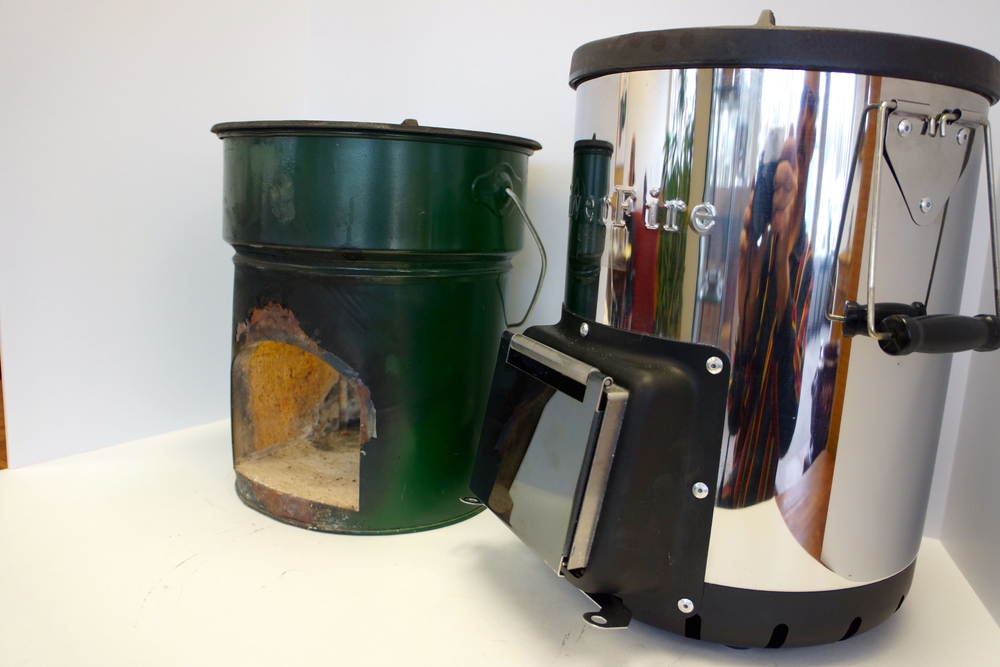
Cheap clay stoves and extruded combustion chambers are heavy and fragile. Thin mild cold rolled steel stove bodies found with many rocket stove manufacturers are subject to oxidation and can limit stove life. Poor quality, thin cast iron tops crack. Cheap floor tiles crack and fail. Pop can thin steel alloy combustion chambers used in the Deluxe StoveTec, & EcoZoom Versa are subject to failure in the field. Our SilverFire® rocket stove represents numerous technological innovations, incorporating both primary and secondary airflow to improve combustion, thermal efficiency, reduce fuel use, and lower emissions. SilverFire does not use cheap ceramic insulation or thinly cast stovetops found in most leading Rocket stove brands (note hollow cast pot supports in the photo below.
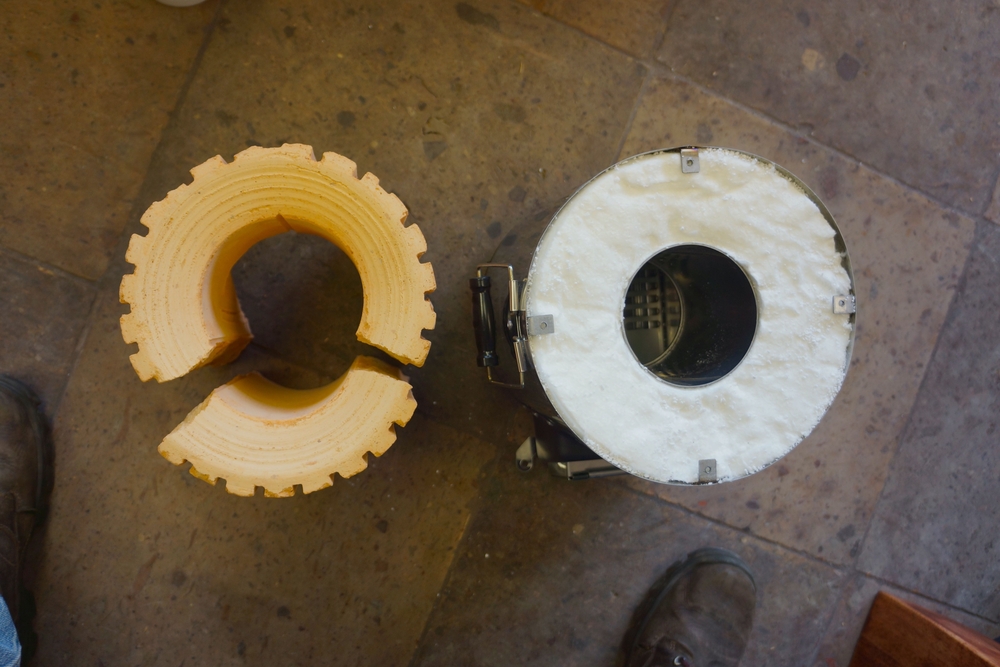
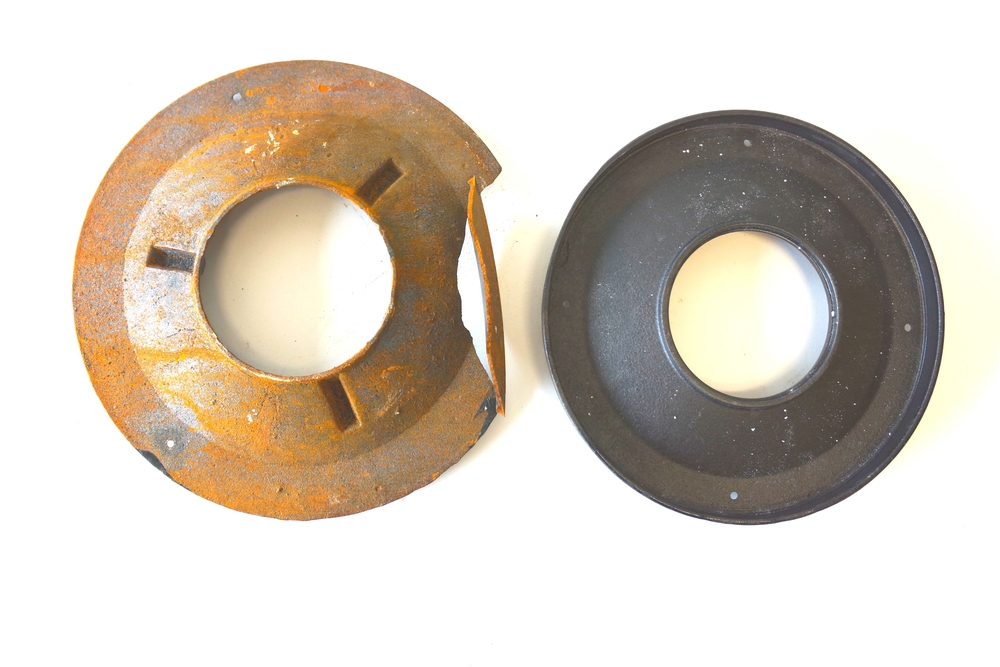
The Survivor is a portable, fast, fun, rugged outdoor cookstove. It features a large rectangle combustion chamber that accepts uniform fuel insertion, rather than the common round clay chamber, that restricts lateral fuel access. The custom black stainless steel door is utilized in a closed position while cooking. This retains more heat in the chamber for more complete combustion and improves safety with great ember control. National Parks often permit only self-contained cookstoves. Users of open stove designs may be cited or fined. Please check the regulations in your area.
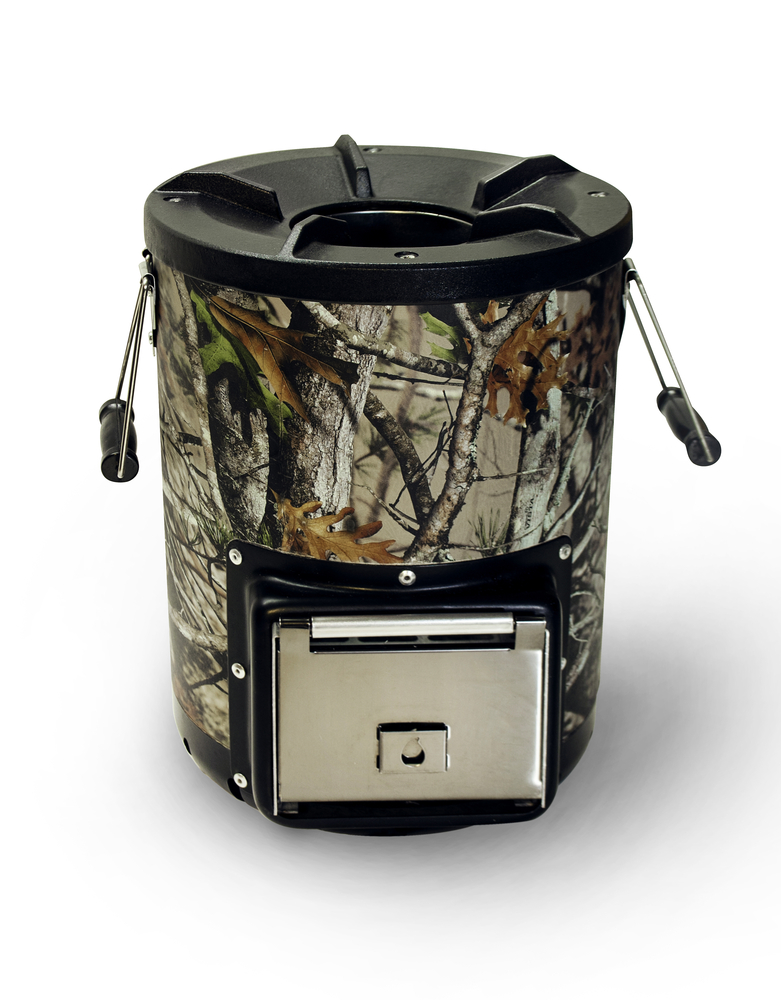
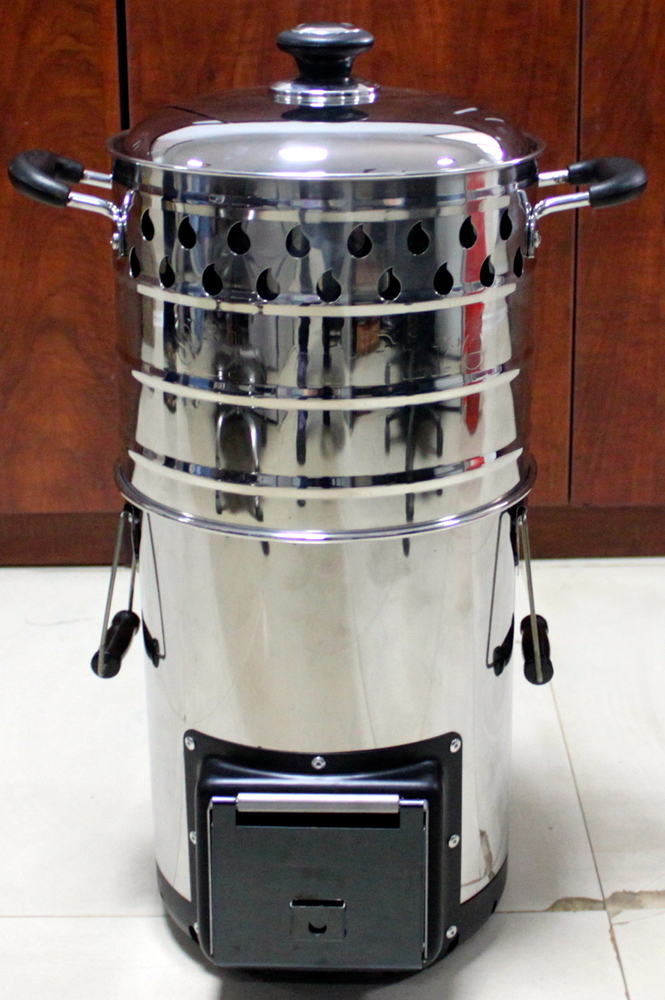
A solid steel fuel shelf is provided with every stove. Our portable cookstoves are insulated maximizing heat transfer into the cooking vessel and are not designed for heating. All efficient cookstove designs achieve high temperatures to maximize efficiency and over time, expect the patina of your stove to change color. This is a normal process just as with a motorcycle muffler or a jet afterburner. Darkened blue and golden yellow stainless steel discoloration from using the stove is a normal result from high-temperature heat over time.
Our self contained clean cookstove operation is simple. Add paper or other small tinder to ignite small twigs, sticks, yard scrub, or other flammable biomass. These stoves have been successfully used in locations scarce in fuel, such as in the Pacific Islands where only palm fronds or small pieces of coconut shell are available. This stove is designed for minimal sized fuel. Small thin fuel (pencil thickness) is ideal. Keep twigs or other thin fuel very close together to maximize efficient combustion.
After igniting tinder simply meter fuel towards the rear of the combustion chamber. Keep the door closed except when metering or loading fuel into the stove to maximize combustion chamber efficiency and temperature. Open stove door with a stick or twig only, to prevent burning fingers. As soon as the stove is lit and flames are observed you are ready to start cooking, no waiting time is required as with cooking with charcoal.
SilverFire is not a proponent of charcoal use. Charcoal produces pollution both during the production process and cooking process. Global deforestation due to charcoal production is an unsustainable environmental disaster. 70% to 80% of the energy of wood is wasted during the charcoal production process and the yield is 4 to 1. Only 1 piece of charcoal is obtained from every 4 pieces of wood used during charcoal production. Charcoal is very inefficient for boiling large volumes of water for emergency use, recreation, or daily cooking.
Survivor Specifications:
Cooking Fire Power: ≥ 1.5 KW
Thermal Efficiency: ≥ 35% (StoveTec/EcoZoom 30%)
Emissions Concentration (smoke): ≤ 25mg / m3
SO2 ≤ 20mg / m3
NOx: ≤ 120mg / m3
CO: ≤ 0.1%
Smoke & Gas Blackness Level (Ringelmann Level): ≤ level 1
Upgraded SilverFire ® Survivor 2nd Generation Rocket Stove, New upgraded stove inventory in stock. Please call for a shipping quote to Alaska, Hawaii, & Puerto Rico for additional USPS shipping fee total. Please call or write for all International shipping quotes.
Returned SilverFire products subject to 25% product restocking fee and all shipping costs are non-refundable.
Questions?
Write SilverFire Sales: sales@silverfire.us
Domestic & Humanitarian Sales SilverFire Warehouse: +001 541 485-7114 Pacific Time Zone 10 -5:00 PMPlease contact us directly for volume orders discounts or specialized humanitarian container pricing (NGO’s, Aid Organizations, & Developing Nation Orders)
The solid stainless steel fuel shelf is used to slide twigs or flammable yard scrub (bio-fuel / biomass) into the combustion chamber is included with stove. Our stainless steel Dragon pot is now available and one of our many important options for the SilverFire® Survivor. Other important options include: Survivor Survival stove bag, grille plates, Himalayan salt grille blocks, and our stainless steel wok are now available, see stove & oven accessories.
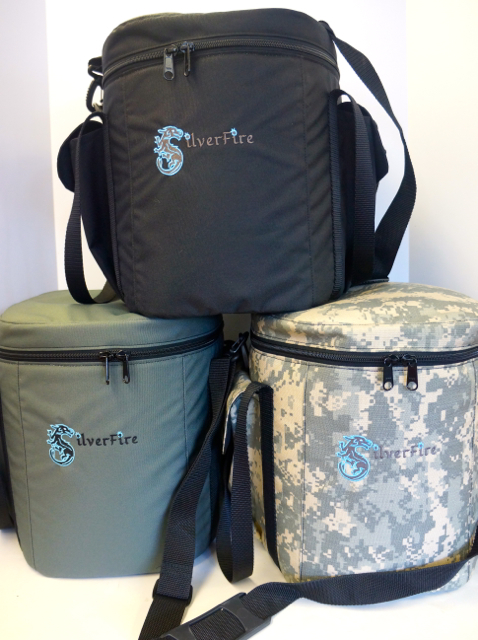
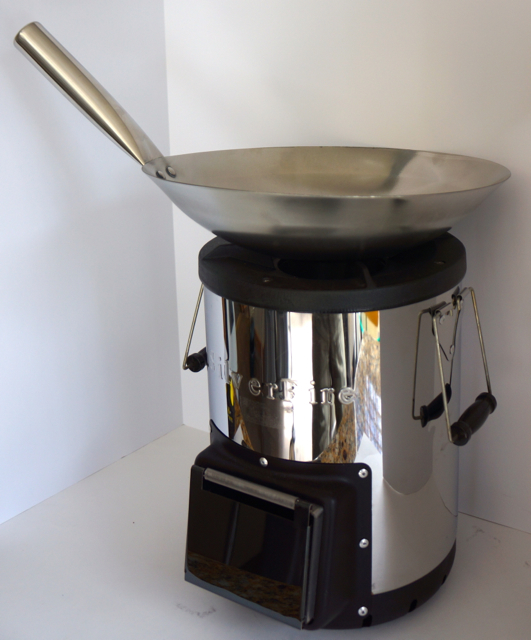
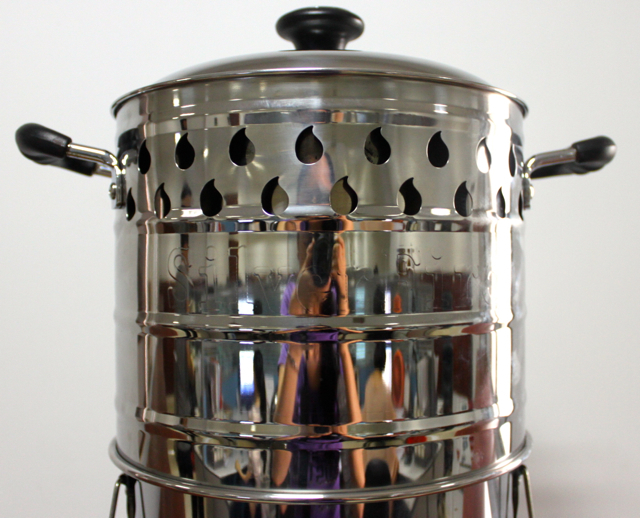
Stove Weight 12.5+ lb. / 5.66+ kg Stove Height: 12.5” / 25 cm
Cast Iron Cook Top Diameter: 9 ¼” / 18 cm
Shipping Dimensions: 16” x 16” x 15” tall / 26 cm x 26 cm x 30 cm tall
Shipping Weight Approximately 17 lb. / 7.71 kg
Returned SilverFire products subject to 25% product restocking fee and all shipping costs are non-refundable.SilverFire’s mission as a leading designer of clean cookstoves is to protect humans from the health and environmental impact of inefficient cookstoves and fuel use.
Please contact us for any questions at 541 485-7114 Pacific Time Zone, Monday through Friday 10 AM – 5:30 PM. Saturdays by appointment
We double package all SilverFire stove product shipments for ground transportation to your door, however, we cannot control ship times or how shipments are handled. If there is ever an issue, please give us a call and we will do our best to make you happy. We stand behind our products.
Special Note: All wood & biomass stoves create soot on the bottom of cookware. It is important to clean the bottom of your pots or after time the buildup of soot can impede heat transfer into the pot. There are many industrial cleaners such as Krud Kutter that are effective in removing soot from the bottom of cookware with a paper towel, prior to washing. Tough soot buildup may also require a scouring pad and cleaner before washing cookware. Porcelain over steel and stainless cookware are easier to clean than cast iron, regular steel, and aluminum cookware. Cast iron cookware dissipates heat effectively, though and the absorption of iron into the food is a benefit to those with low iron blood levels.
A tracking number is sent to your provided email entered at the time of order. The tracking number is generated at the end of each business day after carrier scans package (Monday through Friday). Please refer to the email for the tracking number. There is no ground service on weekends.
Please note many of our important stove and cookware options are found on our Accessories, Oven, other links!
Always feel free to call with questions 10 AM - 5:30 PM Pacific Time Zone, Monday through Friday regarding our products.
SilverFire Showroom / Warehouse
Coupeville, WA 98239
Contact Information: Mon – Fri / 10:00 AM – 5:30 PM
SilverFire Sales: 541 222-9212 Pacific Time Zone, 10 - 5:00 PM
541 485 7114 Warehouse / Pacific Time Zone 10AM - 5:30PM
Rocket Stove Guide
The biomass-stove market is getting crowded and there is lots of confusion. We want consumers to be informed before spending hard-earned cash. All rocket stoves can cook a hamburger or boil a small quantity of water. Does that make a good rocket stove? The answer is no. What are the characteristics of a clean rocket stove? See our TLUD (top-lit updraft stove) guide under the Hunter & Super Dragon models for information on those stove types (Solo, Biolite, etc…).
A short guide to minimum requirements for consideration:
Durable
Insulated Combustion Chamber (quality insulation)
Cast Iron Cook Top (concave shape to increase heat transfer)
Refractory Stainless Steel Construction (mild steel lacks longevity)
Portable (Carrying handles secure and clear cooktop)
Stove Base (Safe cooking platform, protects cooking surface)
Adequate Rocket Elbow (paint or metal fatigue not evident)
Rectangle Shaped Combustion Chamber (fuel insertion not impeded)
Advanced Options: (available only with the SilverFire Survivor)
*Stainless Steel Construction
*Secondary Air
*Combustion Chamber Door (with viewing port)
*Ventilation Duct Work
*Heat Reducing Baffles (stove base, protect the cooking surface)
*Fuel Gauge (fuel-saving guide)
*Easy To Transport
*Skirted Pot, Stove Bag, & Cookware Options
Unfortunately, many stoves sold are not clean cookstoves. They are not capable of meeting the criteria of low emissions or low fuel use. They include the Volcano stove (open fire performance, Tier O), Deadwood Rocket Stove Tier 1, Grover Rocket Stove Tier 2, and large numbers of compact folding stoves Tier 0 (open fire performance) appearing on the market. Popular Tier 3 biomass stoves include StoveTec, EcoZoom, EnviroFit, & Pratik. Several of these stoves, only designed with primary air utilize mild steel stove bodies and fragile clay combustion chambers, a significant shortcoming if durability is important.
A well-designed rocket stove is based on very specific design principles and tested against specific emission and cooking tests. There are very specific requirements for clean cookstoves and they are rated against strict performance standards from Tier 0 to Tier 4. Unfortunately, many rocket stoves are going to fall closer to the Tier 1 standard, meaning they are less efficient and use greater amounts of fuel and are higher in emissions, slightly better than the 3-stone open fire.
Well-designed rocket stoves should be both high in low power and high power cooking performance, low in emissions, fuel use, capable of boiling large amounts of water and be safe. The aspirational Tier 4 category stove is a tested high-performance cookstove that is safe, efficient, low in emissions, and fuel use.
Clean cookstoves are measured against the water-boiling test (WBT). This protocol requires that a stove bring a minimum of 5 liters of water to a boil and have the ability to simmer for 45 minutes with a relatively small amount of fuel, as the ideal outcome.
The PCIA describes the Water Boiling Test (WBT) as a simple cooking process to measure how efficiently a stove uses fuel to heat water in a cooking pot and the number of harmful emissions produced while cooking.
Important WBT Measurement Parameters:
- time to boil (adjusted for starting temperature)
- burning rate (adjusted for starting temperature)
- specific fuel consumption (adjusted for starting temperature)
- firepower
- turn-down ratio (ratio of the stove’s high power output to its low power output); and
- thermal efficiency
For more information on stove performance see these links:
Global Alliance for Clean Cookstoves -- Measuring Progress During Phase I


works like a charm
- Description

- Reviews

Introducing the new 2021 SilverFire® Survivor 2nd Generation rocket stove with secondary combustion and upgrade thicker Stainless Steel combustion chamber! We have made our robust award-winning stove even tougher. Folks around the world rely on our stoves to stay alive sanitizing water for drinking, cooking, and cleaning applications. This is the most efficient natural draft rocket stove we have offered to date. While other lower-quality and less efficient stoves (StoveTec, EcoZoom, and others) are shortchanging you on build and performance, we continue to improve our product offerings!


Product Name: Survivor Rocket Stove
Submitters Name: Melissa Jett
Headline: Hurricane Matthew
Product Rating: 5.0
To Order: Select Add to Cart and proceed to the Cart to checkout on the top right of the page.
You never have to create an account to buy from SilverFire! 
Our SilverFire® Survivor rocket stove features our new solid stainless steel fuel shelf! This state of the art clean cookstove is durable, fun, and fast. SilverFire combines both secondary and primary combustion. Our rocket stove is more efficient and uses less fuel than other rocket stove designs. Competitive rocket stoves utilize primary combustion only.
Our Survivor rocket stove is easily identified by our solid stainless steel fuel shelf that stows inside the rectangular combustion chamber! Another SilverFire® rocket stove design 1st! No cheap painted steel wire rack to lose or misplace when you need it! Our correct rectangle-shaped rocket stove combustion chamber allows the stainless steel shelf to ride inside the combustion chamber behind our custom black stainless steel door, when not in use. This is not possible by inferior round-shaped combustion chambers found in most of our competitor's stoves. The Stainless steel solid shelf has a tab that locks directly into combustion chamber floor and allows easy insertion of bio-fuels into the combustion chamber, compared to poorly designed wire racks utilized by StoveTec, EcoZoom and early EnviroFit stoves, which are easily identified by painted mild steel stove bodies that are inferior and poor quality. They all look the same with different paint jobs, slight design modifications, and have cheap clay tile floor titles that crack and fall apart.
Survivor Rocket Stove Assembly Video:
SilverFire uses real ventilation ductwork for secondary combustion in the firebox floor, no cheap clay titles to crack, or fail. The thin mild steel StoveTec, EcoZoom, & EnviroFit stove bodies are subject to short stove life. Our new stainless steel fuel rack ensures greater safety by not allowing hot embers to fall through wire rack. Stainless steel is a superior material for stove construction than mild steel. Rock mineral wool insulation is superior to cheap clay insulation or tiles, period.
Another point of confusion is the 2 door wood and charcoal stove sold by StoveTec & Ecozoom (same stove, different paint jobs). StoveTec (which we created to market stoves for Aprovecho in 2008) offers a humanitarian 2 door stove. It was never the intent to use charcoal as a primary fuel for this stove. Charcoal or coal reduces the stove shelf life. The 2 Door stove sold by StoveTec & EcoZoom was created for uneducated 3rd World cooks that were and continue to destroy their fuel resources by producing and cooking with charcoal. The idea was to teach the uneducated to stop using charcoal and move them to twigs & biomass!
Illegal charcoal production is why so many areas on this planet's forests have disappeared. Charcoal production only yields 30% of the tree. It not sustainable. The pollution is impacting air sheds worldwide. Charcoal burning releases harmful methane emissions during production and then again a second time when cooking. In a real emergency, large volumes of water are required for drinking, cooking, & cleaning. Charcoal, although burning hot does not boil large volumes of water since the flames are not licking the pot (reduced heat transfer). The rocket stove was invented to use found scrub on the ground, to provide the ability to cook for free, eliminate reliance on commercial distribution, reduce emissions, reduce fuel requirements, use renewable fuel resources, and maximize heat transfer to the cooking vessel.
Try boiling a large pot of water on a Weber charcoal BBQ grill, for example, you'll learn it can't be done, there is not adequate heat transfer. All rocket stoves are not equal, although they can cook a hamburger or boil small pots of water. This is not an important daily cooking or emergency preparedness performance endpoint.
Providing a minimum of a gallon of emergency drinking water, or a pot of water to cook a meal (5 liters of water or more), or an adequate amount of water to sanitize your cookware is an important rocket stove comparison. An important stove test to measure meaningful stove performance from one stove to another was the creation of the WBT (5 liter Water Boiling Test). Bringing large volumes of water to a boil with minimal fuel and just fine ash left as the end product is what distinguishes real stove performance.
The SilverFire® Survivor is more than twice as fast boiling large volumes of water compared to the BioLite Basecamp fan stove ($299.95) for example, without the need to constantly remove spent embers due to less efficient stove combustion. Note photo below with the SilverFire® Survivor rocket stove on left showing fine ash and heavy char requiring constant removal on the stove on right. Stove on right burned significantly less efficiently, used more fuel, and required constant maintenance.
Heavy ember & char accumulation is a sign of inefficient combustion, more than doubling time to boil, the time required cleaning, impeding heat transfer, and ventilation. The stove on the right is almost twice the price of our SilverFire® Survivor and significantly less efficient!

This is also true comparing every other rocket stove we have tested, less efficient combustion results in larger amounts of heavy embers, which impedes heat transfer and ventilation. This is why numerous other rocket stoves cannot bring large pots of water to a boil and require frequent ember removal. The SilverFire® Survivor is the most efficient burning rocket stove on the planet, and fine ash is the final combustion end product. Large ember debris post-combustion is a sign of inefficient combustion. The SilverFire® Survivor by contrast only leaves fine ash residue, characteristic of efficient combustion. This means less time spent cleaning stove, increased heat transfer, and more efficient ventilation while cooking.
Here is a new customer modification the SilverFire smokeless fire pit:
Any rocket stove can efficiently cook a hamburger or boil small volumes of water, however, real stove performance is measured bringing the International Standard of 5 liters of water to a boil. Most rocket stoves we test fail these simple tests. The unfortunate fact is we have not tested the USA made rocket stove that can meet the International requirement of boiling 5 liters of water, much less doing it with only 500 grams of fuel (SilverFire® Survivor, 2013). All other rocket stoves we have tested require more frequent cleaning due to less efficient combustion design.
At the Aprovecho stove lab in 2008, we tested the Grover rocket stove which failed the WBT, after 1750 grams of fuel could not bring the International standard of 5 liters of water to a boil. Homemade DIY and non-insulated rocket stoves do not perform even that well. A well-designed rocket stove must incorporate numerous combustion design principles. Most homemade and commercial rocket stoves have significant shortcomings incorporating both combustion principles and the correct cross-sectional airflow to maximize heat transfer with the stovetop. Correct cross-sectional flow is as important as insulating the combustion chamber.
Our Survivor uses minimal fuel, produces little emissions or smoke. Our end product is fine ash, not large embers of char that decrease ventilation, fill the combustion chamber, and choke off the stove, retarding efficient combustion. The SilverFire Survivor is a revolutionary design, incorporating secondary air, primary air, and a door for a hotter fire during high firepower cooking. This results in cleaner combustion than other rocket stove designs, and evident by just fine ash left behind. During low firepower cooking, such as simmering operations, just drop fuel through the top of the stove for long extended low firepower cooking. The door is designed to be closed or laying on top of your fuel during cooking operations.
Crude homemade rocket stoves and poorly designed commercial rocket stoves leave larger pieces of char and embers behind since combustion results are not as complete as with the SilverFire Survivor. The Survivor door is designed to be always falling down on the fuel to retain a hotter fire inside the firebox. This is common sense, your grandmother did not cook with the firebox doors open on her wood stove, nor should you with a rocket stove. We do not recommend cooking with the door open, but unfortunately, some product reviews have shown our product used with the door in the open position, which makes for less efficient combustion. The door is intended to always be falling down on minimal dry fuel for the best results.
Complete combustion and high thermal efficiency is the important outcome with our stove, resulting in fine ash. Fine ash is the end product of complete combustion and a well-designed cook stove. The advanced design is intended for improved efficiency and durability. Compare our superior quality to other brands of rocket stoves, and draw your own conclusions. Our current 2016 Survivor has had numerous upgrades from our initial Spring 2013 (sold out) product launch.
The 2016 Survivor design improvement upgrades include:
1. The Perlite insulation is no longer available and has been swapped out for premium rock mineral wool insulation to eliminate Perlite residue (fine dust) that was evident with rough handling by ground transportation services, during transport and deliveries.
2. Handles are now shipped inside the stove and attached by the customer to prevent the cosmetic dings we saw with ground transportation handlers. Pem nuts are now embedded in the stainless steel stove wall and 6 fine thread Phillip head machine screws are provided to attach handles to the stove. Long handles are an important feature of the Survivor rocket stove. In an emergency, it may be carried while burning if required. Close-fitting rocket stove handles mean your wrists, hands, or fingers will likely be burned if the stove has to be moved in an emergency. Do not buy rocket stoves with poorly designed stubby handles attached to close to stove body!
3. Our original cast iron stove top had 4 pot supports, Our new upgraded cast iron stove top, now includes 5 pot supports! Our rocket stove cast iron top is the thickest and most durable of any brand currently on the market, ensuring years of reliability.
4. We have the only rocket stove in the World with 360 degrees primary combustion ventilation and ducting in the floor of the stove, with no cheap clay tiles! An additional temperature reducing baffle plate has been added to the bottom of the stove, for safer handling and to decrease the temperature on cooking surfaces. Our stove has is the coolest surface temperature below the stove of any product on the market. Many rocket stove designs have legs to try to compensate for the fact that the stove design is too hot below the combustion chamber. These designs also require the cook to squat while cooking. The SilverFire Survivor can be safely placed on ergonomic cooking surfaces, such as a wooden picnic table. Our stove does not require the cook to squat or cook on the ground.
5. A fuel gauge has been added to the custom black stainless steel stove door (another SilverFire exclusive rocket stove design feature)! The flame-shaped diameter fuel gauge is intended to remind folks this is the actual diameter of fuel required for the stove or less! While you can add larger fuel in the stove, standard pencil diameter sized twigs and yard debris is all that is required to cook within our stove. The fuel gauge also provides a second option to lift the stove door when adding fuel, or moving it forward on the fuel shelf. The door is designed to be down when cooking! Tip: Numerous reviews on the web are showing inappropriate cooking techniques with the door open and anywhere from 4 to 10 times too much fuel required! Door down, less fuel!
6. New upgrade ventilation design under grate for improved operation when used for extended cooking durations. This stove allows the most extended duration cook times, without requiring dumping spent embers & char, due to fine ash efficient combustion and less labor for the cook!
7. Redesigned and raised combustion floor gaps for improved ash access & cleanout.
8. The redesigned combustion chamber and slotted stainless steel fuel shelf that stows inside the combustion chamber for easy transportation, ease of inserting fuel, and increased ember safety.
Our lightweight quality rock mineral fiber insulation is superior to extruded clay combustion chamber insulation, due to the increased durability and significant reduction in stove weight. The SilverFire Survivor weighs 12.5 lbs (5.66 KG), which represents approximately a 50% reduction of weight compared to the StoveTec Deluxe & EcoZoom clay combustion chamber designed stoves. The SilverFire cast iron top is significantly thicker than the StoveTec, Eco Zoom, and early EnviroFit stoves. The SilverFire rugged stainless steel body ensures ensure long stove life compared to StoveTec, EcoZoom, early EnviroFit ultra-thin mild steel painted stove bodies. We see several stove organizations also trying to imply heat resistant paint is protecting their mild steel stove bodies. This is not true, mild steel stove bodies fail in the field, period.
We also do not use pop can thin, cheap steel alloy liners that were subject to fail in the field or short mounted handles that mean the cook's hands are not protected if required to move the stove. Long stove handles are required to clear the cast iron top to avoid burns by design. If you’re going to cooking for emergencies, recreation, or with everyday cooking all that is required is a few twigs or a little flammable field scrub. Little fuel is all it takes in a SilverFire® Survivor to boil large volumes of water for drinking, cooking, or sanitizing cookware.
The SilverFire founder Todd Albi was the founder and former Managing Director of StoveTec ®. He fielded StoveTec / Aprovecho’s rocket stove product complaints and quality assurance issues that plagued the organization, impacting StoveTec, EcoZoom, and early EnviroFit stove designs. Todd created SilverFire®, to improve stove quality, eliminate stove quality assurance issues, and develop the highest quality clean cooking products possible. The objective was to incorporate Dr. Larry Wininarski’s best design principles and input and tie SilverFire ® partnerships with the World’s leading biomass & biogas product manufacturers to bring the highest quality, most advanced patented technologies forward. These design improvements address the quality and design shortcomings found in most other biomass rocket stove designs.

Cheap clay stoves and extruded combustion chambers are heavy and fragile. Thin mild cold rolled steel stove bodies found with many rocket stove manufacturers are subject to oxidation and can limit stove life. Poor quality, thin cast iron tops crack. Cheap floor tiles crack and fail. Pop can thin steel alloy combustion chambers used in the Deluxe StoveTec, & EcoZoom Versa are subject to failure in the field. Our SilverFire® rocket stove represents numerous technological innovations, incorporating both primary and secondary airflow to improve combustion, thermal efficiency, reduce fuel use, and lower emissions. SilverFire does not use cheap ceramic insulation or thinly cast stovetops found in most leading Rocket stove brands (note hollow cast pot supports in the photo below.


The Survivor is a portable, fast, fun, rugged outdoor cookstove. It features a large rectangle combustion chamber that accepts uniform fuel insertion, rather than the common round clay chamber, that restricts lateral fuel access. The custom black stainless steel door is utilized in a closed position while cooking. This retains more heat in the chamber for more complete combustion and improves safety with great ember control. National Parks often permit only self-contained cookstoves. Users of open stove designs may be cited or fined. Please check the regulations in your area.


A solid steel fuel shelf is provided with every stove. Our portable cookstoves are insulated maximizing heat transfer into the cooking vessel and are not designed for heating. All efficient cookstove designs achieve high temperatures to maximize efficiency and over time, expect the patina of your stove to change color. This is a normal process just as with a motorcycle muffler or a jet afterburner. Darkened blue and golden yellow stainless steel discoloration from using the stove is a normal result from high-temperature heat over time.
Our self contained clean cookstove operation is simple. Add paper or other small tinder to ignite small twigs, sticks, yard scrub, or other flammable biomass. These stoves have been successfully used in locations scarce in fuel, such as in the Pacific Islands where only palm fronds or small pieces of coconut shell are available. This stove is designed for minimal sized fuel. Small thin fuel (pencil thickness) is ideal. Keep twigs or other thin fuel very close together to maximize efficient combustion.
After igniting tinder simply meter fuel towards the rear of the combustion chamber. Keep the door closed except when metering or loading fuel into the stove to maximize combustion chamber efficiency and temperature. Open stove door with a stick or twig only, to prevent burning fingers. As soon as the stove is lit and flames are observed you are ready to start cooking, no waiting time is required as with cooking with charcoal.
SilverFire is not a proponent of charcoal use. Charcoal produces pollution both during the production process and cooking process. Global deforestation due to charcoal production is an unsustainable environmental disaster. 70% to 80% of the energy of wood is wasted during the charcoal production process and the yield is 4 to 1. Only 1 piece of charcoal is obtained from every 4 pieces of wood used during charcoal production. Charcoal is very inefficient for boiling large volumes of water for emergency use, recreation, or daily cooking.
Survivor Specifications:
Cooking Fire Power: ≥ 1.5 KW
Thermal Efficiency: ≥ 35% (StoveTec/EcoZoom 30%)
Emissions Concentration (smoke): ≤ 25mg / m3
SO2 ≤ 20mg / m3
NOx: ≤ 120mg / m3
CO: ≤ 0.1%
Smoke & Gas Blackness Level (Ringelmann Level): ≤ level 1
Upgraded SilverFire ® Survivor 2nd Generation Rocket Stove, New upgraded stove inventory in stock. Please call for a shipping quote to Alaska, Hawaii, & Puerto Rico for additional USPS shipping fee total. Please call or write for all International shipping quotes.
Returned SilverFire products subject to 25% product restocking fee and all shipping costs are non-refundable.
Questions?
Write SilverFire Sales: sales@silverfire.us
Domestic & Humanitarian Sales SilverFire Warehouse: +001 541 485-7114 Pacific Time Zone 10 -5:00 PMPlease contact us directly for volume orders discounts or specialized humanitarian container pricing (NGO’s, Aid Organizations, & Developing Nation Orders)
The solid stainless steel fuel shelf is used to slide twigs or flammable yard scrub (bio-fuel / biomass) into the combustion chamber is included with stove. Our stainless steel Dragon pot is now available and one of our many important options for the SilverFire® Survivor. Other important options include: Survivor Survival stove bag, grille plates, Himalayan salt grille blocks, and our stainless steel wok are now available, see stove & oven accessories.



Stove Weight 12.5+ lb. / 5.66+ kg Stove Height: 12.5” / 25 cm
Cast Iron Cook Top Diameter: 9 ¼” / 18 cm
Shipping Dimensions: 16” x 16” x 15” tall / 26 cm x 26 cm x 30 cm tall
Shipping Weight Approximately 17 lb. / 7.71 kg
Returned SilverFire products subject to 25% product restocking fee and all shipping costs are non-refundable.SilverFire’s mission as a leading designer of clean cookstoves is to protect humans from the health and environmental impact of inefficient cookstoves and fuel use.
Please contact us for any questions at 541 485-7114 Pacific Time Zone, Monday through Friday 10 AM – 5:30 PM. Saturdays by appointment
We double package all SilverFire stove product shipments for ground transportation to your door, however, we cannot control ship times or how shipments are handled. If there is ever an issue, please give us a call and we will do our best to make you happy. We stand behind our products.
Special Note: All wood & biomass stoves create soot on the bottom of cookware. It is important to clean the bottom of your pots or after time the buildup of soot can impede heat transfer into the pot. There are many industrial cleaners such as Krud Kutter that are effective in removing soot from the bottom of cookware with a paper towel, prior to washing. Tough soot buildup may also require a scouring pad and cleaner before washing cookware. Porcelain over steel and stainless cookware are easier to clean than cast iron, regular steel, and aluminum cookware. Cast iron cookware dissipates heat effectively, though and the absorption of iron into the food is a benefit to those with low iron blood levels.
A tracking number is sent to your provided email entered at the time of order. The tracking number is generated at the end of each business day after carrier scans package (Monday through Friday). Please refer to the email for the tracking number. There is no ground service on weekends.
Please note many of our important stove and cookware options are found on our Accessories, Oven, other links!
Always feel free to call with questions 10 AM - 5:30 PM Pacific Time Zone, Monday through Friday regarding our products.
SilverFire Showroom / Warehouse
Coupeville, WA 98239
Contact Information: Mon – Fri / 10:00 AM – 5:30 PM
SilverFire Sales: 541 222-9212 Pacific Time Zone, 10 - 5:00 PM
541 485 7114 Warehouse / Pacific Time Zone 10AM - 5:30PM
Rocket Stove Guide
The biomass-stove market is getting crowded and there is lots of confusion. We want consumers to be informed before spending hard-earned cash. All rocket stoves can cook a hamburger or boil a small quantity of water. Does that make a good rocket stove? The answer is no. What are the characteristics of a clean rocket stove? See our TLUD (top-lit updraft stove) guide under the Hunter & Super Dragon models for information on those stove types (Solo, Biolite, etc…).
A short guide to minimum requirements for consideration:
Durable
Insulated Combustion Chamber (quality insulation)
Cast Iron Cook Top (concave shape to increase heat transfer)
Refractory Stainless Steel Construction (mild steel lacks longevity)
Portable (Carrying handles secure and clear cooktop)
Stove Base (Safe cooking platform, protects cooking surface)
Adequate Rocket Elbow (paint or metal fatigue not evident)
Rectangle Shaped Combustion Chamber (fuel insertion not impeded)
Advanced Options: (available only with the SilverFire Survivor)
*Stainless Steel Construction
*Secondary Air
*Combustion Chamber Door (with viewing port)
*Ventilation Duct Work
*Heat Reducing Baffles (stove base, protect the cooking surface)
*Fuel Gauge (fuel-saving guide)
*Easy To Transport
*Skirted Pot, Stove Bag, & Cookware Options
Unfortunately, many stoves sold are not clean cookstoves. They are not capable of meeting the criteria of low emissions or low fuel use. They include the Volcano stove (open fire performance, Tier O), Deadwood Rocket Stove Tier 1, Grover Rocket Stove Tier 2, and large numbers of compact folding stoves Tier 0 (open fire performance) appearing on the market. Popular Tier 3 biomass stoves include StoveTec, EcoZoom, EnviroFit, & Pratik. Several of these stoves, only designed with primary air utilize mild steel stove bodies and fragile clay combustion chambers, a significant shortcoming if durability is important.
A well-designed rocket stove is based on very specific design principles and tested against specific emission and cooking tests. There are very specific requirements for clean cookstoves and they are rated against strict performance standards from Tier 0 to Tier 4. Unfortunately, many rocket stoves are going to fall closer to the Tier 1 standard, meaning they are less efficient and use greater amounts of fuel and are higher in emissions, slightly better than the 3-stone open fire.
Well-designed rocket stoves should be both high in low power and high power cooking performance, low in emissions, fuel use, capable of boiling large amounts of water and be safe. The aspirational Tier 4 category stove is a tested high-performance cookstove that is safe, efficient, low in emissions, and fuel use.
Clean cookstoves are measured against the water-boiling test (WBT). This protocol requires that a stove bring a minimum of 5 liters of water to a boil and have the ability to simmer for 45 minutes with a relatively small amount of fuel, as the ideal outcome.
The PCIA describes the Water Boiling Test (WBT) as a simple cooking process to measure how efficiently a stove uses fuel to heat water in a cooking pot and the number of harmful emissions produced while cooking.
Important WBT Measurement Parameters:
- time to boil (adjusted for starting temperature)
- burning rate (adjusted for starting temperature)
- specific fuel consumption (adjusted for starting temperature)
- firepower
- turn-down ratio (ratio of the stove’s high power output to its low power output); and
- thermal efficiency
For more information on stove performance see these links:
Global Alliance for Clean Cookstoves -- Measuring Progress During Phase I


